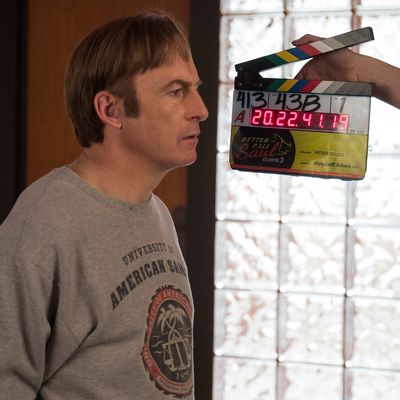
“Are we at our limit yet on ‘shits’ for this episode?”
It’s the afternoon of February 10 and Better Call Saul script supervisor Helen Caldwell is hunched over her well-worn three-ring binder, quietly debating with producer Nina Jack the merit of Bob Odenkirk’s improvised word choice. Like roughly half the production staff gathered this afternoon inside Q Studios, situated just outside of Albuquerque, New Mexico, Caldwell has been a member of this TV family since Breaking Bad first premiered nearly a decade ago and, like everyone here, possesses the company’s signature laid-back vibe.
“Okay, sure, let’s please go again,” says Peter Gould, the episode’s director and series’ showrunner and co-creator, alongside Vince Gilligan (who’s currently back in Los Angeles mired in postproduction). The camera crew prepares for a non-“shit” take of the scene (just in case they need it), which features Odenkirk and co-star Rhea Seehorn inside the condo her character, Kim, lives in, following her episode-nine car accident. If Gould is stressed or burned out after five and a half months of shooting the third season of AMC’s Emmy-nominated Breaking Bad prequel, he’s hiding it well.
“I want to show you something,” he tells me just before 5 p.m., as he dunks a bag of green tea up and down into a paper cup filled with hot water, guiding me into a now-closed, darkened set just a few feet away. He scans the space and sighs. “It’s the saddest thing I’ve ever seen!” he says of the deserted room, which until recently was a key setting in the series, but is now a mess of insulation and exposed wires due to a (top-secret) event that befalls a key Saul character in Monday night’s season finale. “Our production designers are geniuses at building, and also at destroying their own creations. It’s odd work we do, isn’t it?”
Today’s work, and the long night that will follow, caps a ten-day shoot spent wrapping Saul’s latest and often mystifying season; one that’s been as mired in the minutiae of Jimmy McGill’s fall from legal grace as it is in the relentless teasing of Breaking Bad fans that their dearly departed Emmy-winning drama is actually still alive. Exhibit A: The return — or was it the introduction? — of Bad’s drug-lord-fast-food entrepreneur Gustavo “Gus” Fring to the Saul universe in episode two. Much like the show itself, integrating Giancarlo Esposito’s iconic character into the Saul narrative was a giant risk, especially considering he went out in one of the biggest literal bangs in TV history in Bad’s now-iconic “Face Off” episode in 2011.
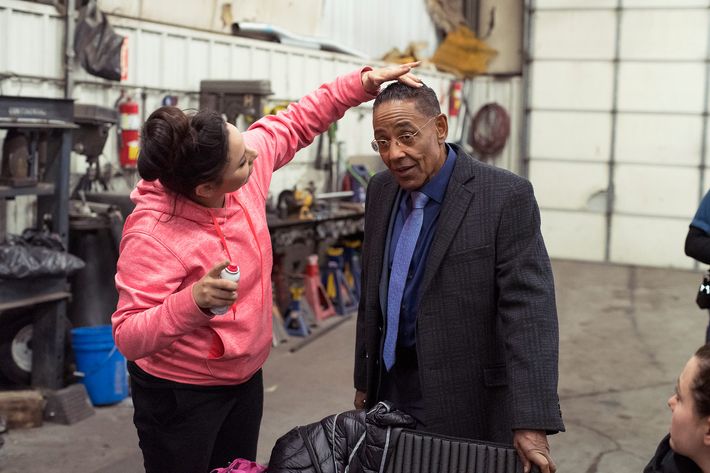
Somehow, it’s all worked. And to hear Odenkirk tell it, the synergy came at the perfect time. “There’ve been some amazing Breaking Bad crossover moments this season — though maybe not enough for people who still want to see Walter White onscreen every week,” laughs Odenkirk, on a break just before his final setup of the day. “Timing-wise, the story is getting closer to the events of Breaking Bad. And characters like Gus actually have complex backstories. They’re not just walking through the frame, you know?”
By 5:20 p.m., Odenkirk’s arc is officially wrapped for the season, and he offers a heartfelt good-bye to the crew before retreating to the local rental house he calls home during production. “The hard work you’re doing here, working until 4 a.m., killing yourselves, all the detail — it will pay off, especially for a show that people are going to watch for years to come,” Odenkirk tells the 30 or so crew members who are crammed inside Kim’s condo set. There’s something uniquely winsome about his speech (perhaps because it was he who created Chris Farley’s iconic motivational speaker character Matt Foley on Saturday Night Live in 1993). Seehorn, still brandishing Kim’s broken arm and very convincing faux-facial bruising, says she was particularly impressed with Odenkirk’s commitment to their scene today. “He’s literally been eating real Doritos all afternoon, in every take, which you can only do on your last day of shooting,” she laughs. “At the end of the season we just take off our Spanx and let our bodies blow up.”
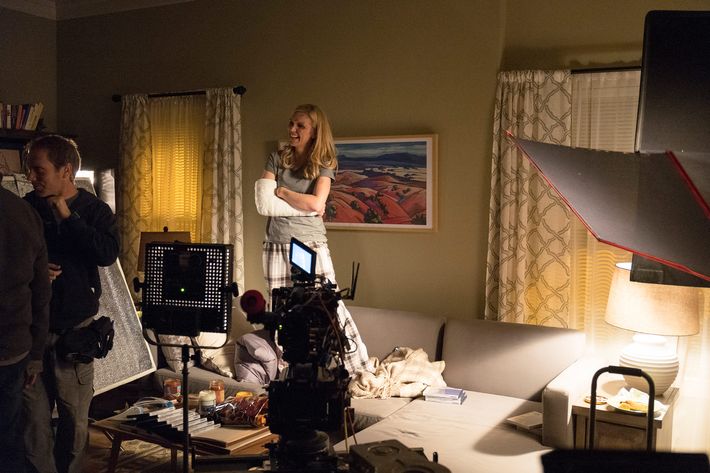
Hours later, the Better Call Saul talent and crew have made a so-called “company move” to a practical location — one that’s not in-studio — in a nondescript industrial area near I-25 outside of Albuquerque, which describes most areas outside of Albuquerque. It’s now about 8 p.m. and actor Mark Margolis is sitting in a director’s chair inside a smelly, oil-soaked auto-body shop while Gould and his team are outside preparing to rehearse what will be another pivotal sequence in the finale.
Prior to his role on Breaking Bad and Better Call Saul as Hector “Tio” Salamanca, the iconic New York actor was known for numerous other gangster characters in such films as Scarface. But tonight, as the pace of the season has maybe taken its toll, he says he’s deep into a different personality. “I’m warning you, I’m a total curmudgeon today,” growls Margolis, in a way that somehow comes off endearing. “I mean, look at this place. Isn’t it glamorous? Well, at least I have fucking tea.”
Margolis is flanked by Esposito, who’s quietly scrolling through his phone, and actor Michael Mando (“Nacho”), all of whom are about to be summoned outside to film a key scene in the finale involving Hector and Gus. At 8:30 sharp, the actors are called to set, and I join Gould and director of photography Marshall Adams outside as they oversee the scene’s rehearsal. “This is going much better than last night,” muses Adams. “How dare you!” says Gould, laughing, but keeping his eyes intently on the monitor. Mando — holding a prop gun — yells to Gould from about 100 feet away, “Peter, will you call action for my timing?” “Absolutely,” Gould calls out. “Let’s go again, please!”

By 10 p.m., a crowd of about 50 crew members — fresh from a food break — has formed around Margolis, Esposito, Mando, and their onscreen henchmen, who are gathered on the gravel driveway outside the auto-body shop. An ambulance has just arrived on the scene as a pair of actor-paramedics practices lifting a gurney into their truck and soon, a body — the result of a late-night gangster showdown. The scene is warmed by an unseasonably manageable temperature of 60 degrees, and lit by a glaring, late-winter full moon, which helps me find my way back to the shuttle as the crew settles in for a long shift, one that will wrap ultimately predawn.
The next morning, I run into Odenkirk in the security line at the airport and he shares some final thoughts about the show, specifically what it’s meant to locals. “I met these people recently who said they moved here because they loved Breaking Bad and they love Saul. They said, ‘This is the vibe we want,’” says Odenkirk, as he walks toward his gate. “In a way, that vibe is a city filled with people working really earnestly. Albuquerque is a struggling city, like many in America, but it’s working hard to get back on its feet.”
Dressed a nondescript black ball cap, T-shirt, and jeans, Odenkirk is reminding me of a conversation I had with Bryan Cranston exactly five years ago on a visit to the Breaking Bad set, where he admitted that, early on in the show, he purposely wore ball caps and sat next to senior citizens at the gate because he assumed they didn’t watch the show and therefore wouldn’t know who he was. If Odenkirk had similar privacy concerns, it’s clear ball caps aren’t cutting it in Albuquerque. As we say good-bye, a throng of middle-aged women mob him, much like they do to Jimmy on the show. “We love you, Bob!” they shout. “We love Saul!”
Ahead, Peter Gould takes us behind a few scenes in the ‘Better Call Saul’ season finale:
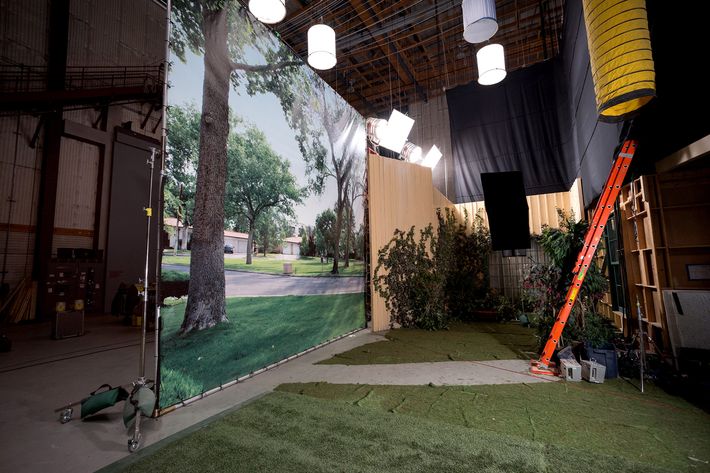
1. The View From Chuck’s Window
“This is the view we see from inside Chuck’s house. It’s actually a real photograph of a neighborhood in Albuquerque. Although from this angle, it’s not very convincing. Our DP Marshall Adams is able make this set feel very real. Chuck’s house has been at the core of the show. It was originally designed by Tony Fanning [the show’s current production designer is Michael Novotny]. One of the quirks of that set though is that if lights aren’t on inside, which they usually aren’t, we have to shoot in smoke to create that wonderful glow around the lanterns. And then we need a lot of fresh air breaks.”

2. Locations
“Here I am directing Mark [Margolis] and Vincent [Fuentes] in an exterior scene in Albuquerque. By the way, we are mostly a location show. We don’t have many standing sets. We have Kim’s apartment, the inside of her office with Jimmy and Chuck’s house. Those are our only main sets. Everything else you see is Albuquerque. We really love getting out of the studio. Sometimes it’s very challenging but it also very gives some reality and grounding to the show. Otherwise, everything on TV looks like Los Angeles or New York.”
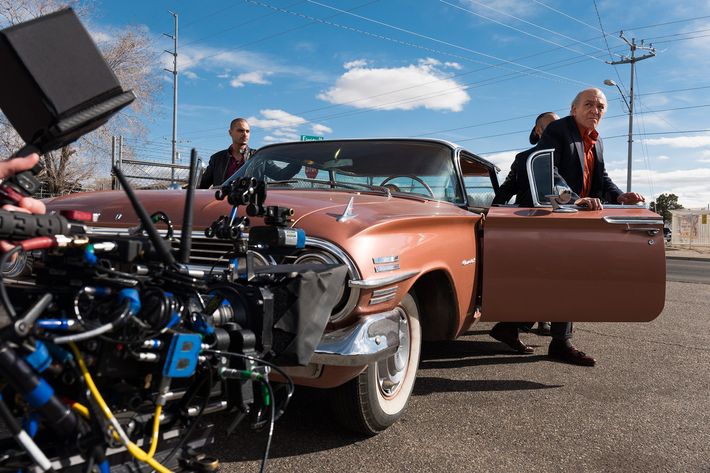
3. Car scouting
“This shot shows the great work done by our transportation captain, Dennis Milliken. We tell him what we need car-wise for a scene, and then he will bring us photos of vehicles, and note which ones run better and which ones need work. This one we actually found locally. There are some great vintage cars in the area owned by collectors. Sometimes we have to find some not-so-beautiful cars, like the ones that Mike and Jimmy drive. Those are actually very hard to find, those somewhat old generic cars. Dennis has had to look in several states for them because of that old ‘cash for clunkers’ program where the government bought cars that were polluters to get them off the road. I hate pollution, but sometimes we can’t avoid it.”
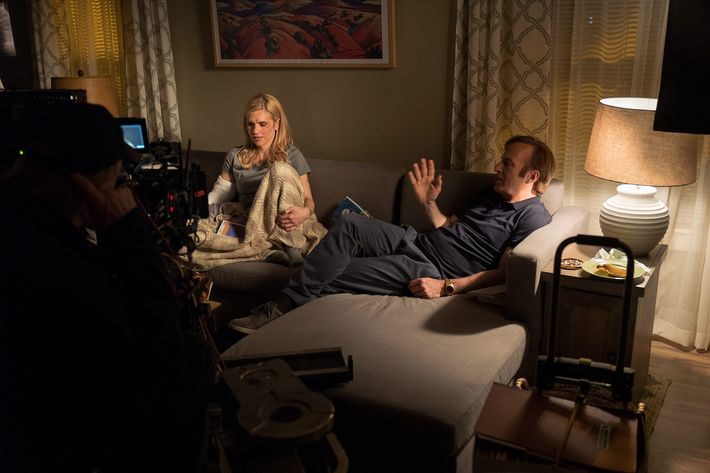
4. Directing
“The big thing we ask ourselves in shooting an intimate scene like this is: What do we want to see moment to moment? Is there a dramatic shift? Are visuals going to reflect that? Sometimes the director will have a specific idea about where and how the actors situate themselves. But sometimes you want to give the cast more freedom to be spontaneous and intimate. A lot of this scene for me was watching what Bob and Rhea did naturally and then structuring the visuals around that, finding a way to communicate things visually that were already in the story. You also want to give the editors choices — in this case that was Kelley Dixon, who’s cut almost every episode of TV I’ve ever directed. I always think about her on the set: Is there a piece or moment that will make her life easier? I always feels her presence over my shoulder. You learn so much about directing from editing. The joy of being a showrunner is I get to have my hand in editing every episode. This was only my fifth episode directing television ever. Showrunners know the show, that’s our advantage, but other outside directors bring new things. It’s nice to have a mix. One thing we pride ourselves on is allowing directors flexibility. For example, Michael McKean’s character is allergic to electricity. If you watch the episodes that address that, every director shot them differently. Some use a lot of jump cuts, another used an actual film camera. There is so much inventiveness, and that’s one of the great pleasures of the whole operation.”
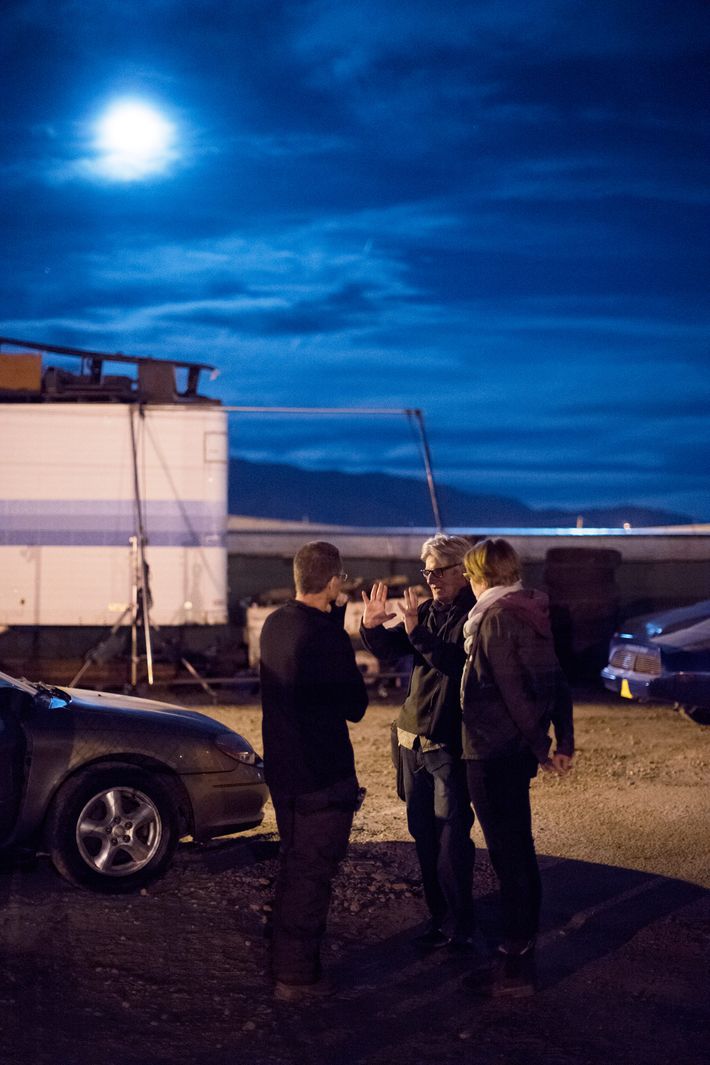
5. Moon lighting
“Filmmaking hasn’t changed that much in the last half century, but there has been a huge shift in cameras specifically. We shoot digitally with a Panasonic VariCam, and you need very little light to get good images, to the point where having a full moon, like we did that night, can change the way a night scene looks. One thing our DP also struggled with in shooting this sequence was that there was another industrial complex a few blocks away that had a light shining down onto our set, so we had to work hard to get rid of light! For those of us who’ve worked in film, we were used to walking around a night shoot and having things pretty bright, but with this new technology we’re shooting things at such low levels of light, now it’s easy to trip over a cable. It’s more dangerous! But the results are terrific. To me, it doesn’t look like film and it doesn’t look like digital. It looks like its own thing.”

